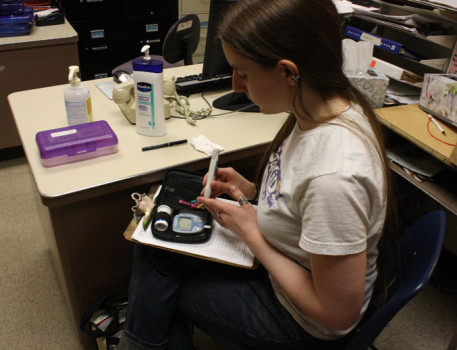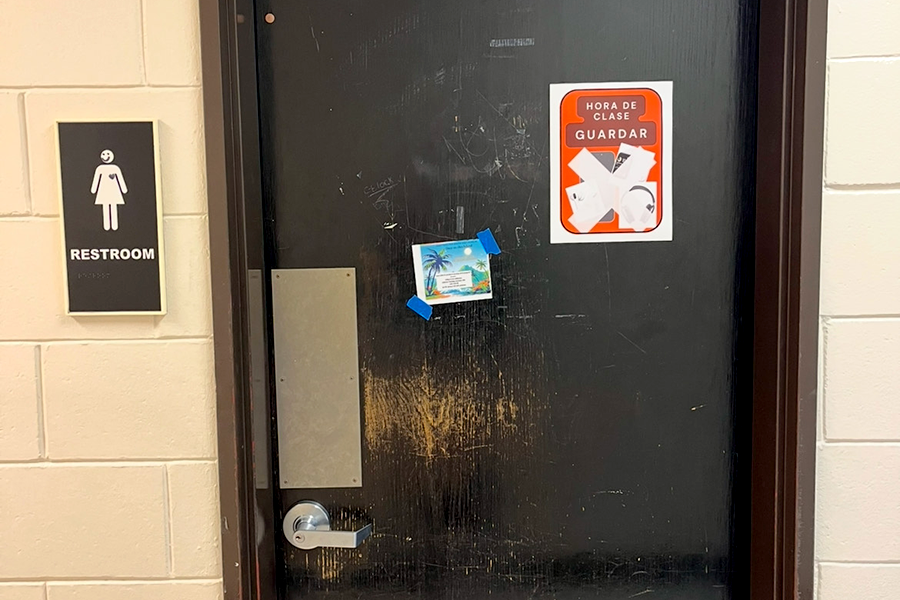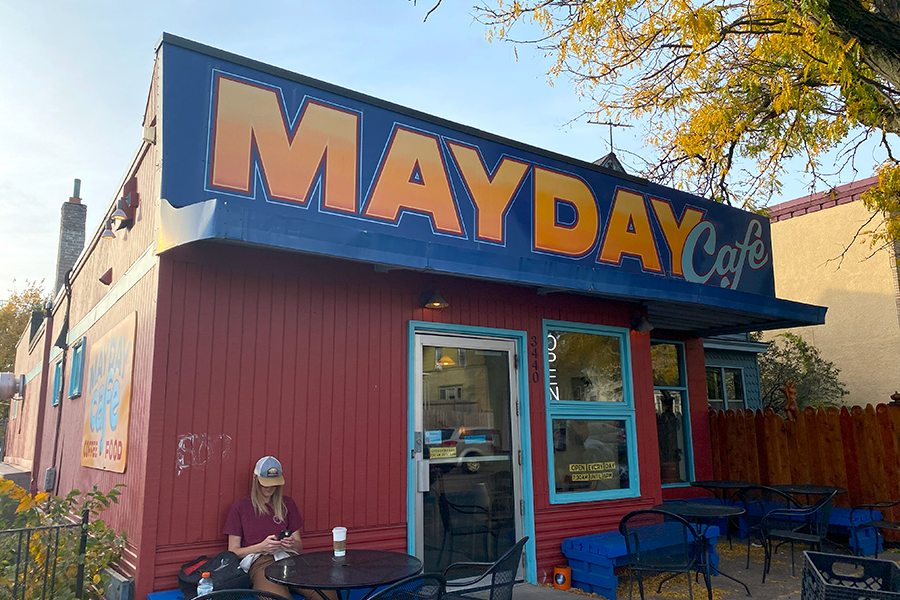This article was published in the Southerner’s spring news magazine.
Josie Browning still remembers the exact day she heard the news that would change her life.
“March 20, 2006,” said Browning, “it was a Tuesday.” This was the day that Browning, after months of symptoms like fatigue, blurry vision and extreme weight loss finally visited the doctor, who knew immediately what the they pointed to. The diagnosis? Type 1 diabetes.
After telling her the news, Browning’s doctor told her that she needed to immediately drive to the hospital. “I was completely freaked out,” Browning said. She spent two days at the hospital, where she received treatment and learned how to manage her condition.
Five years later, as a senior in high school, Browning must constantly manage her diabetes in addition to dealing with the everyday stresses of high school.
Nationwide, 1 in 400 Americans live with Type 1 diabetes. A total of 23.6 million Americans, 8.3% of the population, have a form of the disease, according to the American Diabetes Association (ADA).
Ellanor Abdullah, a licensed practical nurse at South, said she knows of “6 or 7” South students who have diabetes. However, she said that she knows there are other diabetics she isn’t aware of.
Type 1 diabetes, the type Browning has, was formerly known as juvenile diabetes because it is most commonly diagnosed in children and adolescents. The disease occurs when the body is unable to produce enough insulin to convert sugar, starch and other food into energy. As a result, they must administer insulin through either an injection or an insulin pump. According to the ADA, only 5% of diabetics have Type 1 diabetes. The more common form, Type 2 diabetes, occurs when the body can’t use insulin properly.
Individuals with Type 1 diabetes must pay close attention to their blood sugar levels. If the levels get too high, diabetics can develop a condition called ketoacidosis. If untreated, this can lead to a diabetic coma, according to the ADA.
In order to manage her diabetes, Browning gives herself an insulin injection whenever she eats anything with carbohydrates, or when her blood sugar level rises above a certain level. Before she goes to bed, she also takes long-acting insulin.
Browning said a common misconception about diabetes is that she must follow a strict diet where she can’t eat sugar. In reality, she can eat anything; as long as she keeps track of the carbohydrates she has eaten and takes enough insulin to compensate. “That seems to be a really hard concept for people to get; that I can eat anything I want, I just have to take medicine for it,” she said.
Since her first stay, Browning has not had to make any emergency visits to the hospital for her diabetes. She has, however, had a few incidents of very low blood sugar where she had to eat something immediately. ‘Those are really scary,” she said. When her blood sugar gets too low, she said she gets an overpowering feeling that “something is wrong” which she likens to a panic attack.
Abdullah said that many students with diabetes “have expressed wanting to be as normal as the rest of their peers.” For instance, in order to spend their lunchtime with their friends, many diabetics come to check their blood sugar before lunch, “and then they can go be in the lunch line with everyone else,” said Abdullah.
Before heading to lunch, Browning stops at the Health Office to check her blood sugar level and administer insulin shots. She brings her own lunch to school, mostly because she prefers it to the school lunch, but also because it makes it easier to keep track of carbs she eats.
If she will be eating during class, she plans ahead to ensure she will be able to take insulin. “Usually I would know beforehand and would talk to my teachers about it,” Browning said, “and either I would bring my insulin with me and just take it very discretely in the middle of class, or I would have to go down to the nurse and take it.”
The Americans with Disabilities Act helps students manage their disabilities during school by mandating that schools accommodate for the needs of students with diabetes, by, for example, allowing a student with diabetes to self-manage their insulin levels in the classroom or permitting extra absences for medical appointments.
Abdullah said that diabetics are allowed to leave class and come down to the health office whenever necessary. For example, a former student used to keep food in the health office refrigerator. “She had a liberal pass where she could come down if she felt like her blood sugar was low, and she could test and have a snack here,” Abdullah said.
In addition, diabetic students are permitted to eat food at any time. “If their blood sugar’s low and they need to have something to snack on, they can carry it with them,” Abdullah said.
To help students manage their diabetes, the health office provides log sheets for students to record their blood sugar levels, insulin administered and food they have eaten. For the most part, however, the students who regularly come to the Health Office are able to manage their condition on their own, and the role of the Health Office is to be there for them. “We’re here as a support if they need us,” Abdullah said.
Although she has had diabetes for five years, Browning said she still has some struggles with management. She has recently been experiencing blood sugar levels above her normal range. In addition, she is currently taking gym, and the exercise causes a drop in blood sugar levels. Browning said she has had to learn how severe these drops will be. Despite these problems, she has begun to “see a pattern” in her blood sugar levels. “That’s a good sign that I’ve got a handle on it,” she said.
Over time, Browning has come to accept her diabetes. It wasn’t, however, an easy journey. After her initial diagnosis, her first reaction was anger at people who didn’t understand her condition. “People really didn’t seem to get it when I explained it to them,” she said. “Now I’ve sort of overcome that and realized that people aren’t going to know right away what I’m talking about. So that’s fine.”
Despite its problems, Browning sees a bright side to her diabetes. “It gives me structure,” she said. “Before I had diabetes I pretty much didn’t have to manage anything… I just did whatever I wanted to. And now this sort of forces me to take responsibility for things.”
Abdullah said diabetics often deal with their disease in different ways. “There are some students who have very severe diabetes… and they don’t care for themselves very well, and some are kind of in denial that they have it,” she said. On the other hand, “there are some students who just go about it matter-a-fact and they don’t have a problem with other students knowing.”
Browning describes herself as “very open” about her disease. “I’m really willing to try to explain it to people… I like being able to let people know that this is such a big part of my life.” Although she admits it “does get a bit frustrating” when she has to correct common misconceptions and assure people that she can eat sugar, she likes to make jokes about her disease. Browning doesn’t believe she is treated differently than anyone else and said that this might be due to her willingness to talk.
Browning said she talks about her diabetes with the intention of “having people understand what I have to go through, so they kind of understand me a bit better.”








